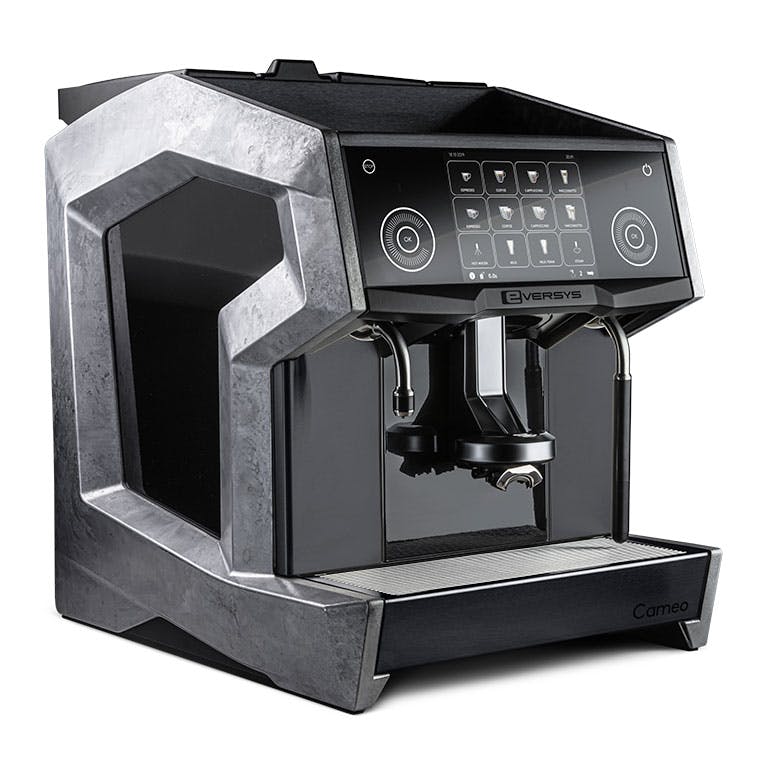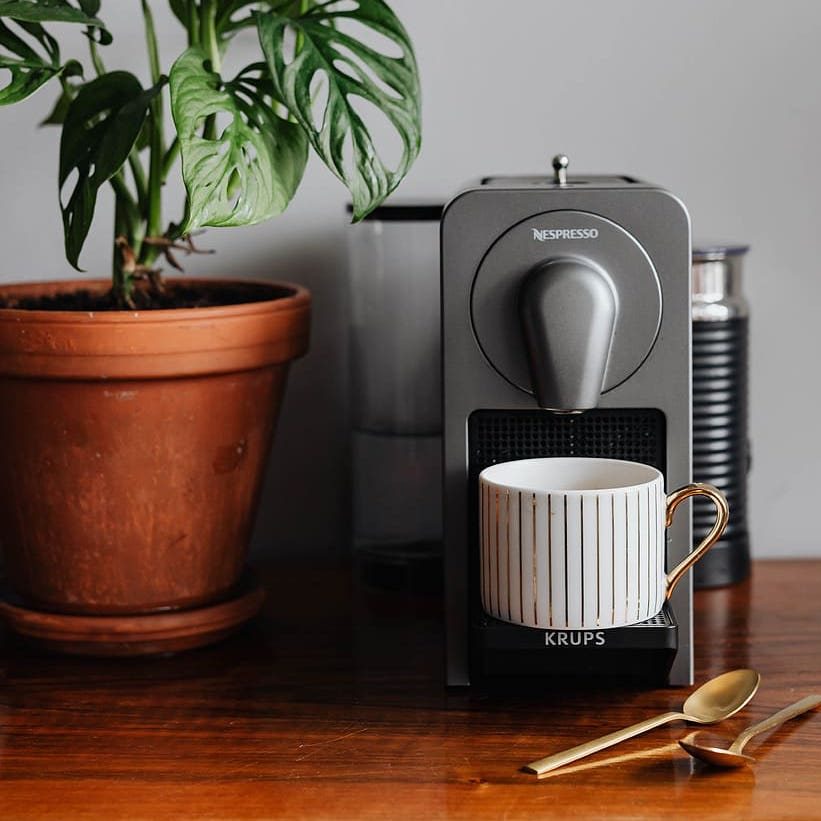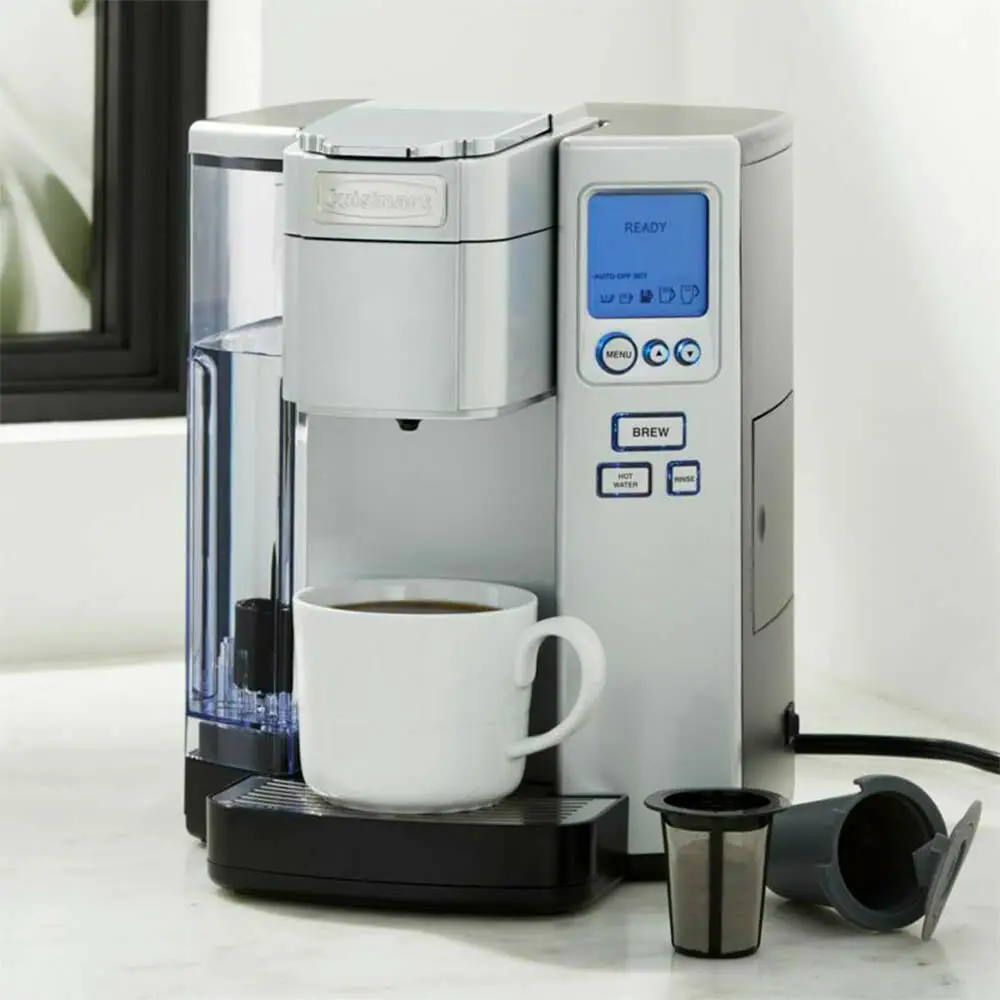What is Coffee Machine Descaling?
Descaling means cleaning the internal parts of a coffee machine. Over time, minerals from water create limescale inside the machine. This happens in all appliances that use water, especially those that heat it. When we descale a coffee machine, we remove these mineral deposits. It ensures the machine works well and the coffee tastes good.

Why Descaling is Crucial for Coffee Machine Maintenance
Descaling is key to keep your coffee machine in good shape. If not removed, limescale can clog water paths and even cause damage. Descaling also helps maintain the taste and temperature of your coffee. It is an important step in coffee machine care that should not be overlooked.
Signs It’s Time to Descale Your Coffee Machine
Knowing when to descale your coffee machine is key for its upkeep. Recognizing the signs helps prevent future problems and maintains your coffee’s quality. Here are a few indicators that it’s time for descaling:
- Coffee takes longer to brew: It’s a clear sign of mineral buildup slowing water flow.
- Machine makes strange noises: Gurgling or unusual sounds can signal clogs in the system.
- Coffee isn’t hot enough: Limescale may insulate and interfere with heat transfer.
- Poor coffee taste: A change in your coffee’s flavor could be due to residue affecting the brew.
Don’t wait for these signs to become pronounced. Regular maintenance is better than waiting for problems.
The Impact of Mineral Buildup on Coffee Flavor and Machine Function
Mineral buildup inside your coffee machine isn’t just about looks. It can seriously affect both taste and function:
- Flavor loss: Minerals can create a flat or bitter taste in your coffee.
- Reduced efficiency: Clogged water paths mean your machine must work harder.
- Increased energy use: More energy is needed to push water through buildup.
- Potential damage: Left unchecked, scale can lead to costly repairs or replacement.
To keep your coffee tasting great and machine running smoothly, descale regularly. This will prevent scale from impacting your coffee enjoyment and machine’s longevity.
How Often to Descale Your Coffee Machine
It is crucial to figure out how often to descale your coffee machine. The frequency depends on various factors, such as the type of water you use and how often you make coffee. Hard water has more minerals and causes scale much faster than soft water. Hence, if you have hard water, you’ll need to descale more often, typically every two months. If you use soft water or filtered water, descaling every three to six months may suffice.
Always refer to your coffee machine’s manual. Manufacturers often provide recommendations on descaling frequency. Moreover, some modern coffee machines have indicators alerting you when it’s time to descale. If your coffee machine doesn’t have this feature, pay attention to signs of scale buildup. These can include slower brewing times, odd noises, or a decline in coffee temperature.
Scheduling Maintenance for Optimal Coffee Machine Performance
To maintain optimal performance of your coffee machine, schedule regular maintenance. This routine should include descaling as an essential task. Mark your calendar as a reminder; this helps prevent forgetting to descale at the right time.
For coffee aficionados who use their machines daily, consider descaling every one to two months. Casual users might be fine with less frequent maintenance. The goal is to keep your coffee tasting great and your machine performing like new.
Keep records of maintenance activities, including descaling. This history is helpful to track when you last performed descaling and to plan the next session accordingly. Regular descaling ensures you extend the lifespan of your coffee machine and enjoy consistent coffee quality.
Step-by-Step Guide to Descaling Your Coffee Machine
To ensure your coffee machine keeps producing delicious cups of coffee, descaling is essential. In this section, I will walk you through the steps required for a thorough descaling process. Remember, safety first – always unplug the coffee machine before beginning the descaling process.
Preparing the Machine and Making the Descaling Solution
- Unplug and Empty: Start by unplugging your coffee machine. Empty any water or coffee grounds in the carafe and the filter basket.
- Read the Manual: Check your coffee machine’s manual. It may have specific instructions for descaling. Follow these carefully.
- Choose a Descaler: Pick your descaling agent. This could be white vinegar, a commercial descaler, or a mixture of citric acid and water. Be sure to use the correct proportions.
- Mix the Solution: If using vinegar, mix equal parts of white vinegar and water. For a commercial descaler, follow the instructions on the packaging. When using citric acid, dissolve one to two teaspoons in a quart of water.
- Fill the Reservoir: Pour your chosen descaling solution into the machine’s water reservoir up to the maximum fill line.
These steps prepare your coffee machine for the actual descaling process. Using the right descaler can prevent damage and ensure the machine is cleaned effectively without affecting the flavor of your coffee.
 Different Descaling Agents You Can Use
Different Descaling Agents You Can Use
When it’s time to descale your coffee machine, you have several options. The right agent will clean effectively without harming your machine or changing the taste of your coffee. Let’s explore the agents you can use.
Pros and Cons of Vinegar, Citric Acid, and Commercial Descalers
Vinegar:
- Pros: It’s cheap and natural. Vinegar can break down limescale well. It’s widely available too.
- Cons: Vinegar may leave a smell or taste behind. It can also harm rubber parts over time.
Citric Acid:
- Pros: Also natural and effective. Citric acid is stronger than vinegar and rinses cleaner.
- Cons: It must be mixed precisely. Too strong a solution can damage your machine.
Commercial Descalers:
- Pros: These are made for coffee machines. They’re balanced to descale without damage. Some are eco-friendly.
- Cons: They cost more than vinegar or citric acid. You must choose the right type for your machine.
Each descaling agent has its uses. Think about cost, convenience, and safety for your machine. Your coffee machine manual may suggest a specific descaler. Follow this to avoid any problems.
The Risks of Neglecting Coffee Machine Descaling
Ignoring descaling can lead to issues with your coffee maker. It affects taste and how long the machine lasts.
Consequences for Coffee Taste and Machine Lifespan
Not descaling can worsen your coffee’s flavor quickly. Minerals in the buildup make the taste dull or even bitter. Your coffee machine could also face damage and have a shorter life. Regular descaling keeps flavor fresh and extends machine lifespan.
Tips for Preventing Scale Buildup
To keep your coffee machine in tip-top shape, it’s best to stop scale before it starts. Here are practical tips to prevent scale buildup and safeguard your appliance.
Using Filtered Water and Regular Maintenance
Filtered Water:
- Use it always: Filtered water has fewer minerals. This means less scale in your coffee machine.
- Check filter regularly: Ensure your water filter is working well. Replace it as needed for the best results.
Regular Machine Checks:
- Inspect often: Look at your coffee machine’s parts. Search for early signs of scale.
- Clean parts daily: Wash the removable parts after each use. It keeps minerals from sticking.
Machine Care Routine:
- Wipe down: After brewing, clean the machine’s exterior. Use a damp cloth for this.
- Deep clean monthly: Beyond daily cleaning, choose a day each month for a thorough clean.
By using filtered water and sticking to a good maintenance routine, you can greatly reduce the need to descale your coffee machine often. This protects your machine and keeps your coffee tasting great.
 Aftercare Following the Descaling Process
Aftercare Following the Descaling Process
Descaling your coffee machine is like giving it a fresh start. Aftercare is critical.
Ensuring a Clean Machine for the Best Coffee Experience
Once your coffee machine is descaled, rinsing is key. Run fresh water through a few cycles. This removes any leftover descaling solution. Make sure to empty and rinse the carafe too.
Dry all parts before reassembling. Moisture can cause mold or limescale to return faster. Use a soft, dry cloth for best results.
Check each component for missed residue. A final inspection ensures a clean machine. It protects flavor and machine health.
Keep up on regular cleaning after descaling. This will make the next descale less of a chore. It’s good machine care.
With these steps, your coffee machine is ready. It will serve you delicious, untainted coffee once again.
